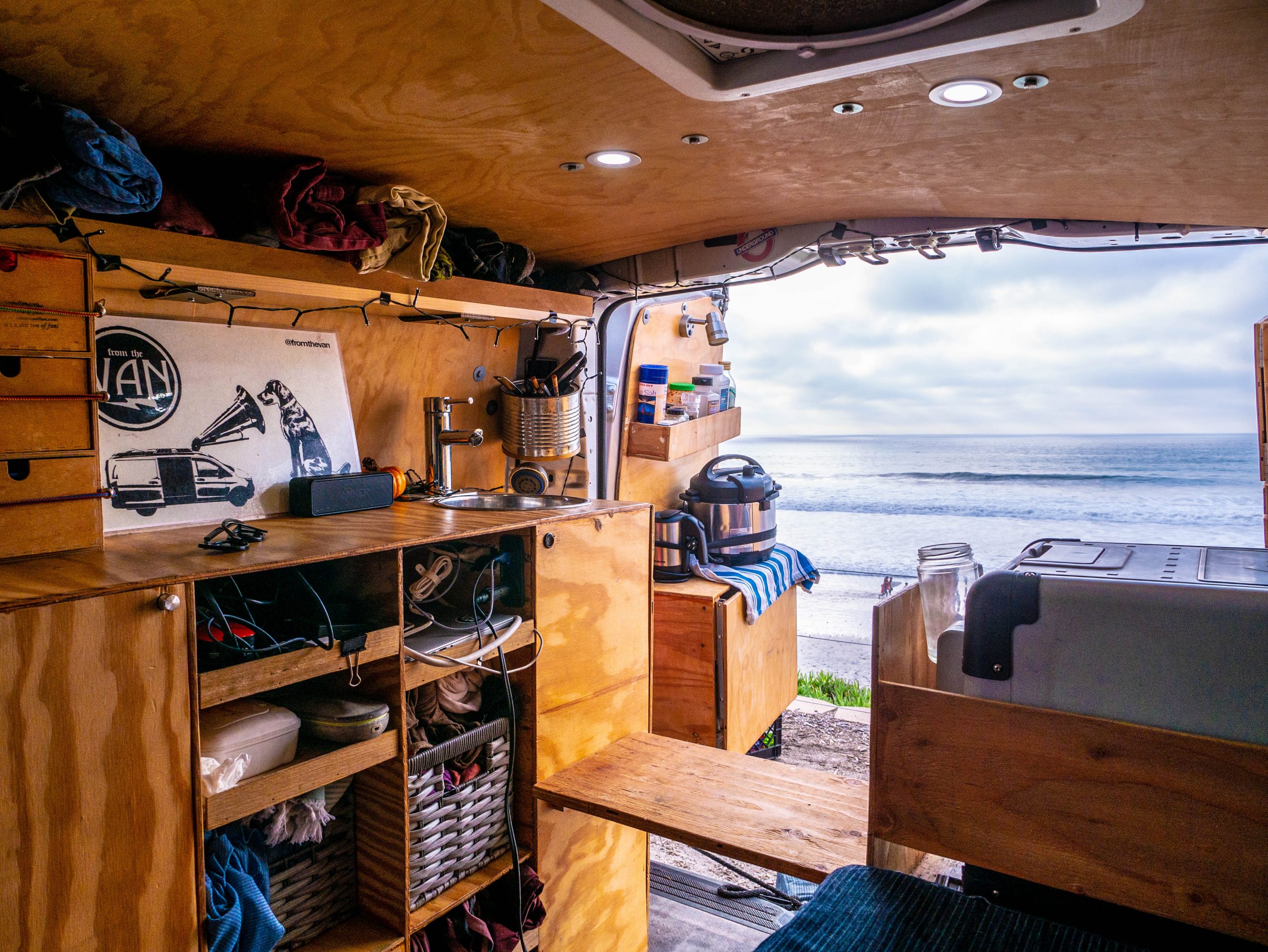By Rob Putnam
As the sun rises over an Arizona skydive drop zone, Tamale Sepp flings open the doors of her nondescript, under-the-radar white van. She inhales the earthy air mingled with scents of grass crushed by jumpers as she begins her day in the cruiser that she recently made her home. In late December, she elected to surrender her apartment keys and abandon the conventional life that most of us have accepted. She bought a van and set to work as she customized her new wander wagon. Van life is an option that appeals to her and a growing number of other people. It represents emancipation from sometimes soul-crushing rent and an opportunity for impromptu travel and deepened self-knowledge.
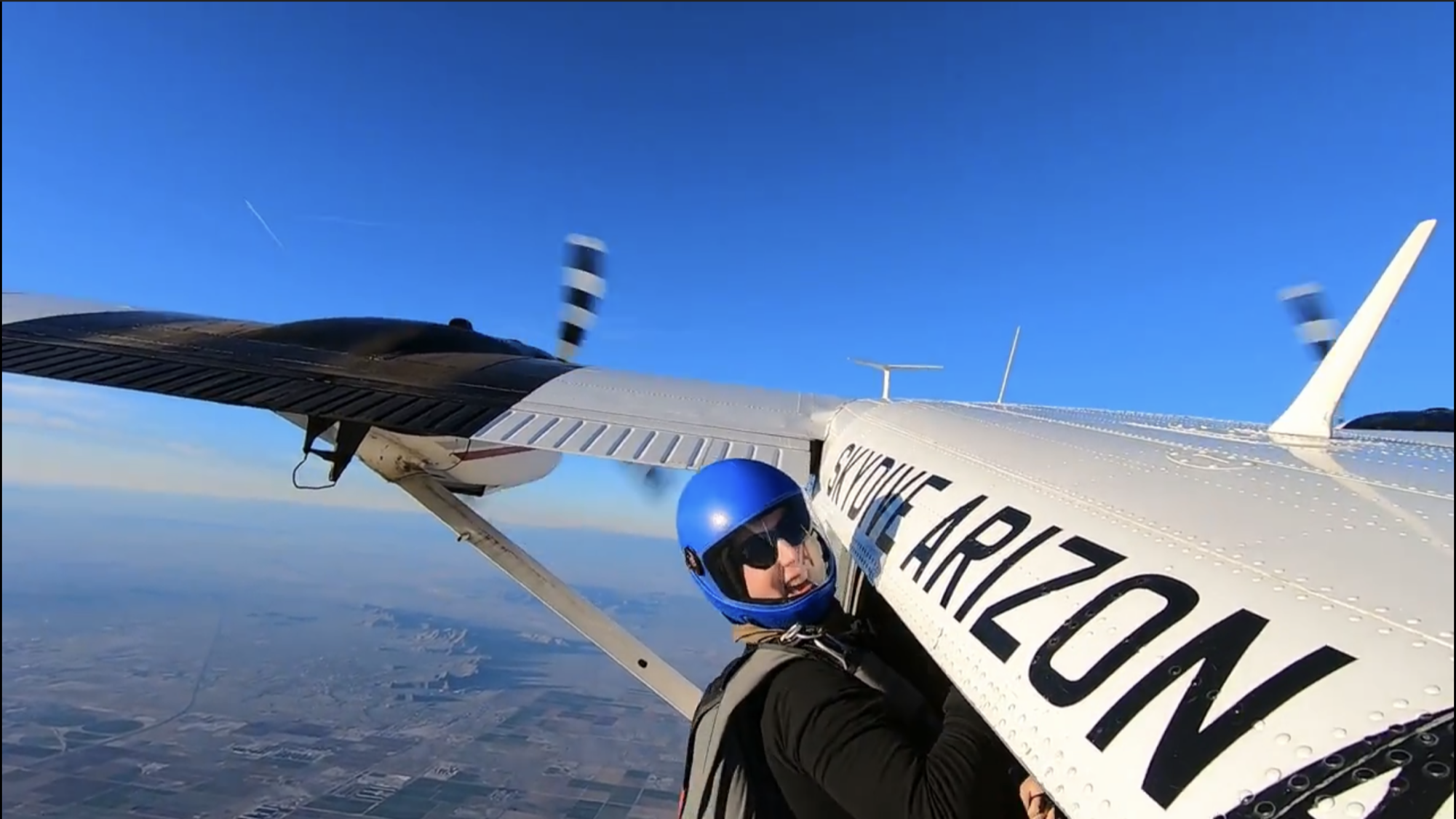
Sepp is a standup comedian and skydiver who’s lived in Chicago for the past several years. When a change in her life circumstances dropped in unannounced, she saw it as an inexorable invitation to the road. Moreover, it would allow her to book gigs across the country well into 2022 without the sting of flights or hotels. Since she eats in her van, she can also dodge not-always-wholesome road food. “I’d wanted to go on tour for a long time,” she explains. “It’s a lot of fun—I’ve done it in Europe before. You get to perform and hang out with your friends. It’s like a sleepover that never ends.

“There’s been an explosion of solo female travelers in the world of van life,” the comedian continues. “With the growing number of online remote jobs that have become available, people have realized that they don’t have to stay in one place.” Indeed, while on the road, the tech-savvy Sepp, a licensed real estate agent, supports herself with referrals and her Patreon blog called TamaleRocks.
As a lone traveler, she’s always mindful of her surroundings. “Awareness goes a long way,” she says. In addition to her dogs, which alert her when strangers approach, she’s also versed in various modes of self-defense. As a relative newcomer to the life, she pads her travels with layovers at friends’ homes, occasional campground bivouacs, and showers at both truck stops and her nationwide gym.
The shift to van living has, of course, been an adjustment. “There’s a lot of dragging your stuff around,” she observes. “Everything lives in the van. I throw all of my things into my tote and head to the showers. When I stay with friends, I have to switch clothes—there’s more to it than simply washing. I organize them by suitcases: warm clothes in one, lighter wear in another. You relinquish a lot of creature comforts, but what you gain is the opportunity to travel and have experiences with people. I’m young enough that I can do this.”
An unexpected insight she’s gleaned from her van-life transition is how effortlessly her cash is consumed. Since she set out, she’s found that food is often her heftiest expense. “This adventure has taught me how much money I spend on frivolous things,” Sepp admits. “A coffee and sandwich at a café will run me twenty bucks and likely more. It adds up so fast. Bad habits like sleeping late are also easy to fall into. So this has also taught me how to maintain a structure.”
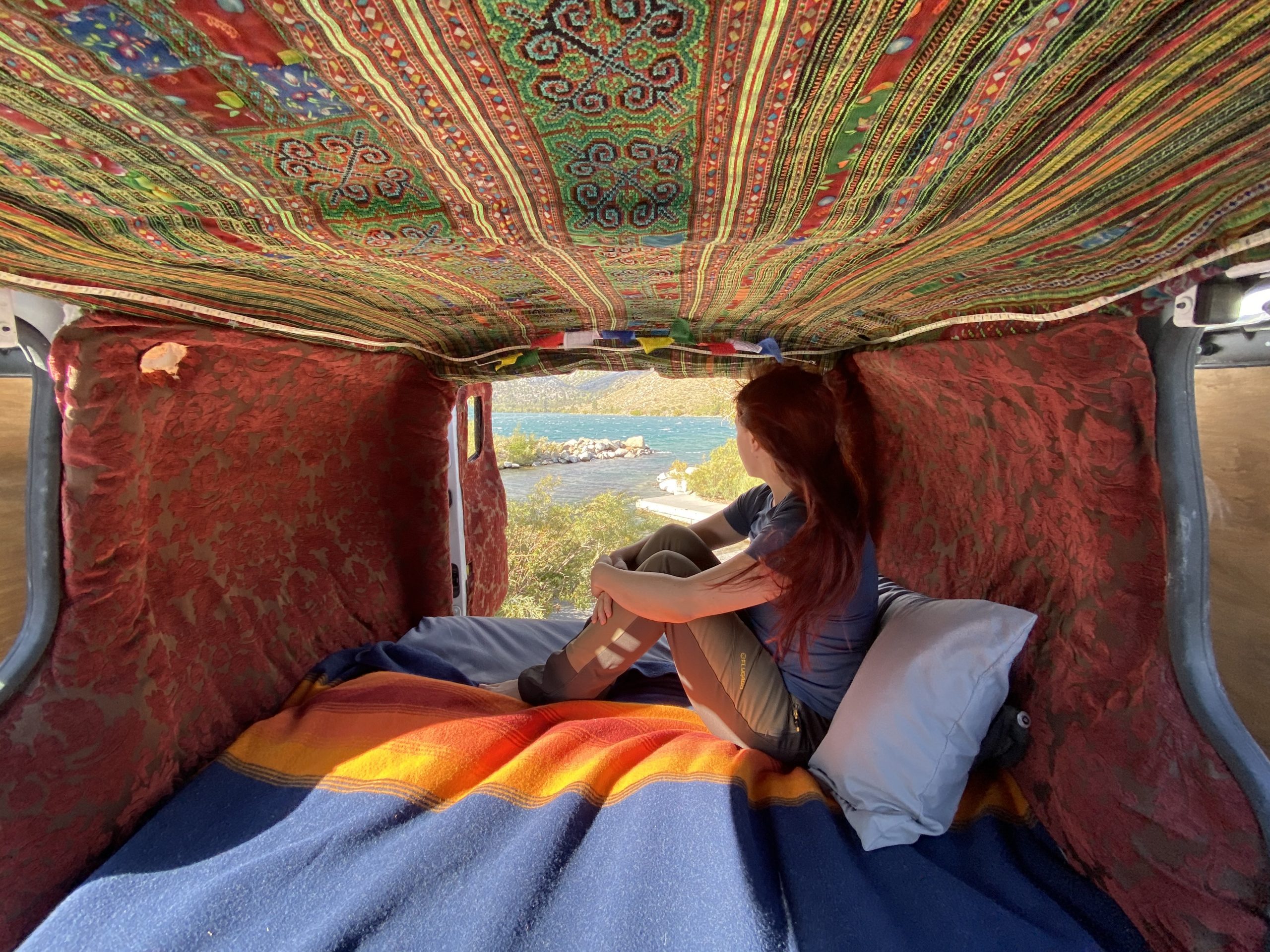
Los Angeles local Emily Pennington took to the road in mid-January for entirely different reasons: to satisfy her penchant for minimalism and to visit all sixty-two of our national parks over the next year. Like Sepp, she finances her odyssey in part via her weekly blog at Outside Online. “I’ve always been interested in tiny houses and more minimalist lifestyles,” she says. “It’s a unique challenge to downsize, given the current state of the environment and how consumerist the country has become.”
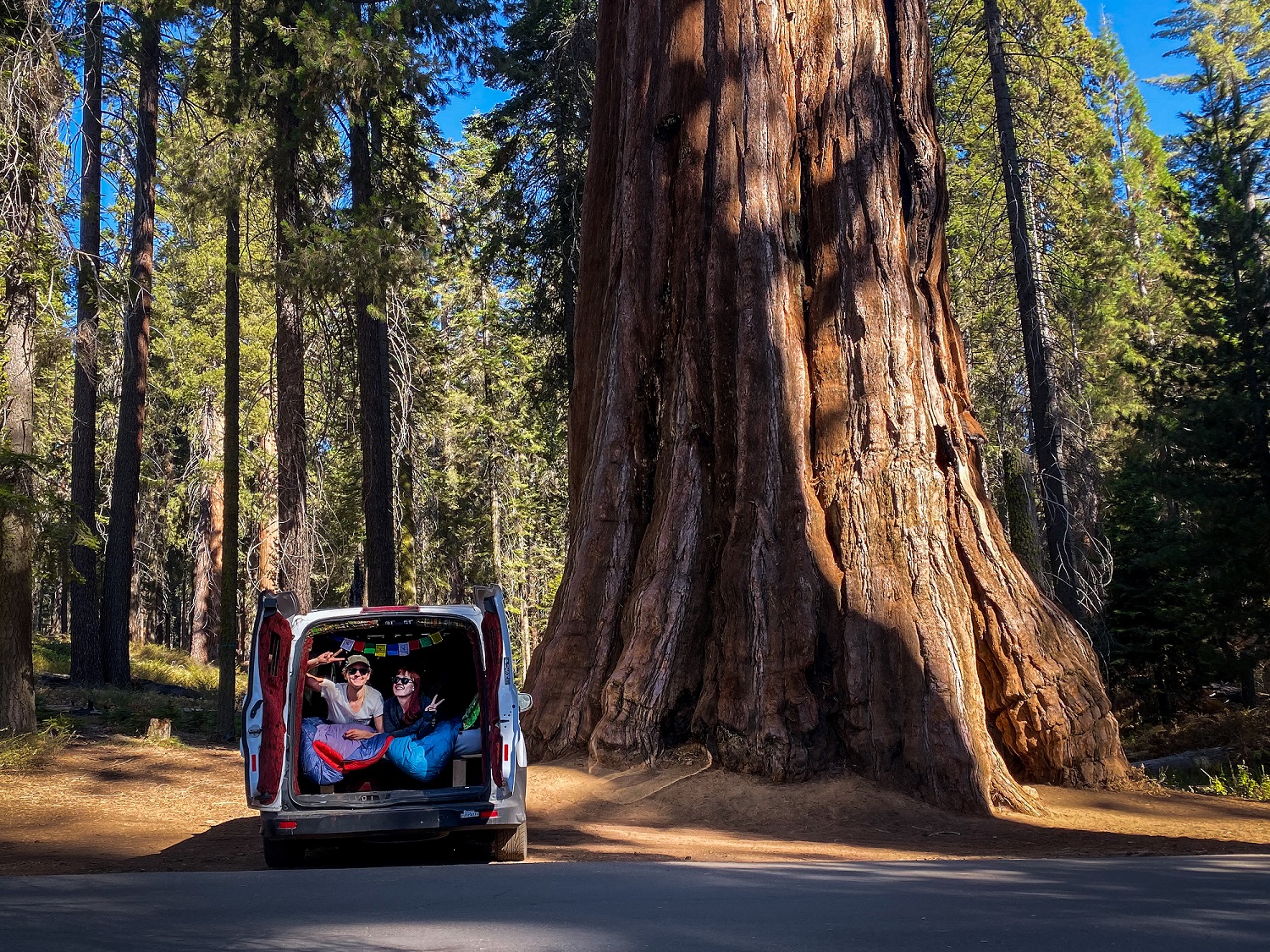
She hadn’t been long on the road when she was compelled to make changes to her daily routine. Much of the challenge, she finds, is issued by the environment. “It’s easy to romanticize this life, but in reality, it gets very cold even in the desert,” she observes. “I spend a lot of my time hiking during the day. It starts to get dark around six, and it can drop down to 30°. Learning what my camping preferences are—some places are free—and where I feel safe has also been a learning experience.” To aid in her search, she often turns to the camping apps Boondocking and Campendium as well as the van-life blog Bearfoot Theory.
Not surprisingly, another challenge is to wedge sufficient fresh fruits and veggies into her diet. This can be tricky even for someone that lives next to a Whole Foods, let alone in a van. “I read nutritional labels to make sure something healthy happens in my day,” she explains. “It’s also harder than I expected to meet fellow travelers.”
Back to the chilling reality of frigid nights, Pennington doesn’t rely simply on her van heater to keep warm. Quite the opposite: she calls on her Suaoki 400-watt solar generator, which powers her lights, charges her various devices, and serves-up juice to her heated mattress pad. “Then, at least you go to bed warm,” she says with a light laugh. “Your body heat maintains that throughout the night. There are more powerful batteries, but mine was only $400 versus $1,000.”

One of her chief expenses is gas, which she views as akin to rent. “If you plan to drive from city-to-city, you can estimate the mileage,” the avid traveler explains. “But within the parks, it’s easy to drive 30 minutes to see one thing and then 30 in another direction. I haven’t quantified the costs yet, but I imagine that I’ll be over budget.” Generally, she burns through two tanks of fuel per week, which tallies to around $400 per month – still far less painful than rent in virtually any American city.
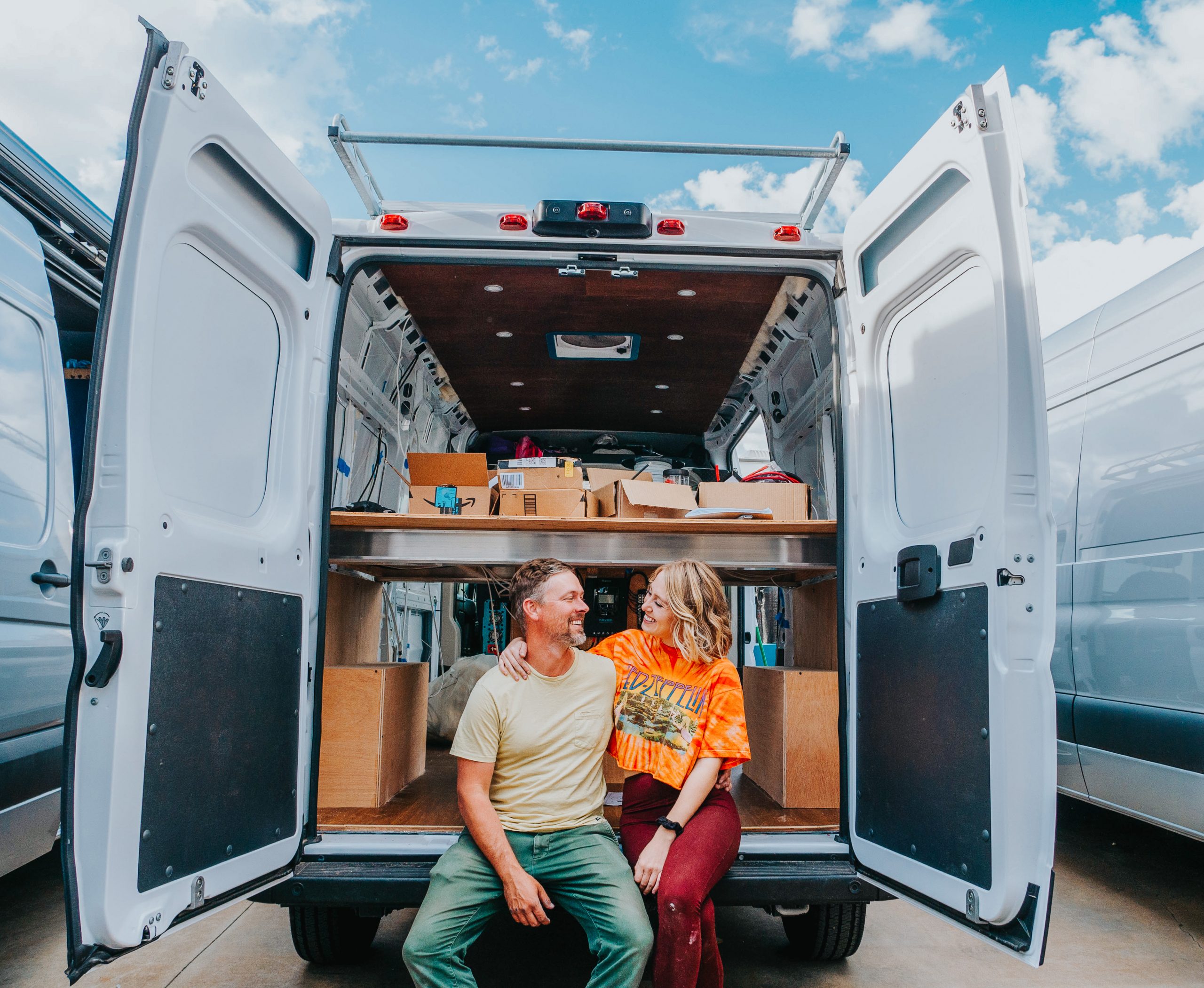
Social activist Marty Benson is something of a van-life vet. He’s lived the life for nearly three years. A licensed lawyer and dedicated improv performer, environmental advocacy has long been close to his heart. Prior to the launch of his bold new adventure, he relied solely on his feet, bike, and public transit to navigate Los Angeles before he relocated to San Diego. “As a matter of public policy and politics, I was without a car for eight years before I got my van,” he recollects. “Being in central San Diego County without any dependents or pets, it was easy to get around. But when I got my dog, I wanted to take him places. That’s hard to do [without transportation].
“I’d heard about people living in vehicles and realized that I could afford a van and an apartment,” he continues. “Once it worked, I decided, ‘Okay, let’s complete the experiment and get rid of the apartment.’ I thought I’d hate it at first, but when I moved into the van, I never looked back. It’s got so many advantages. If I’ve got a morning meeting in Irvine, I drive there the night before, I get close to the gym that’s nearby my meeting [location], and I go from there. I don’t have to mess with traffic. There are so many weird hacks with van life that you don’t even realize.”
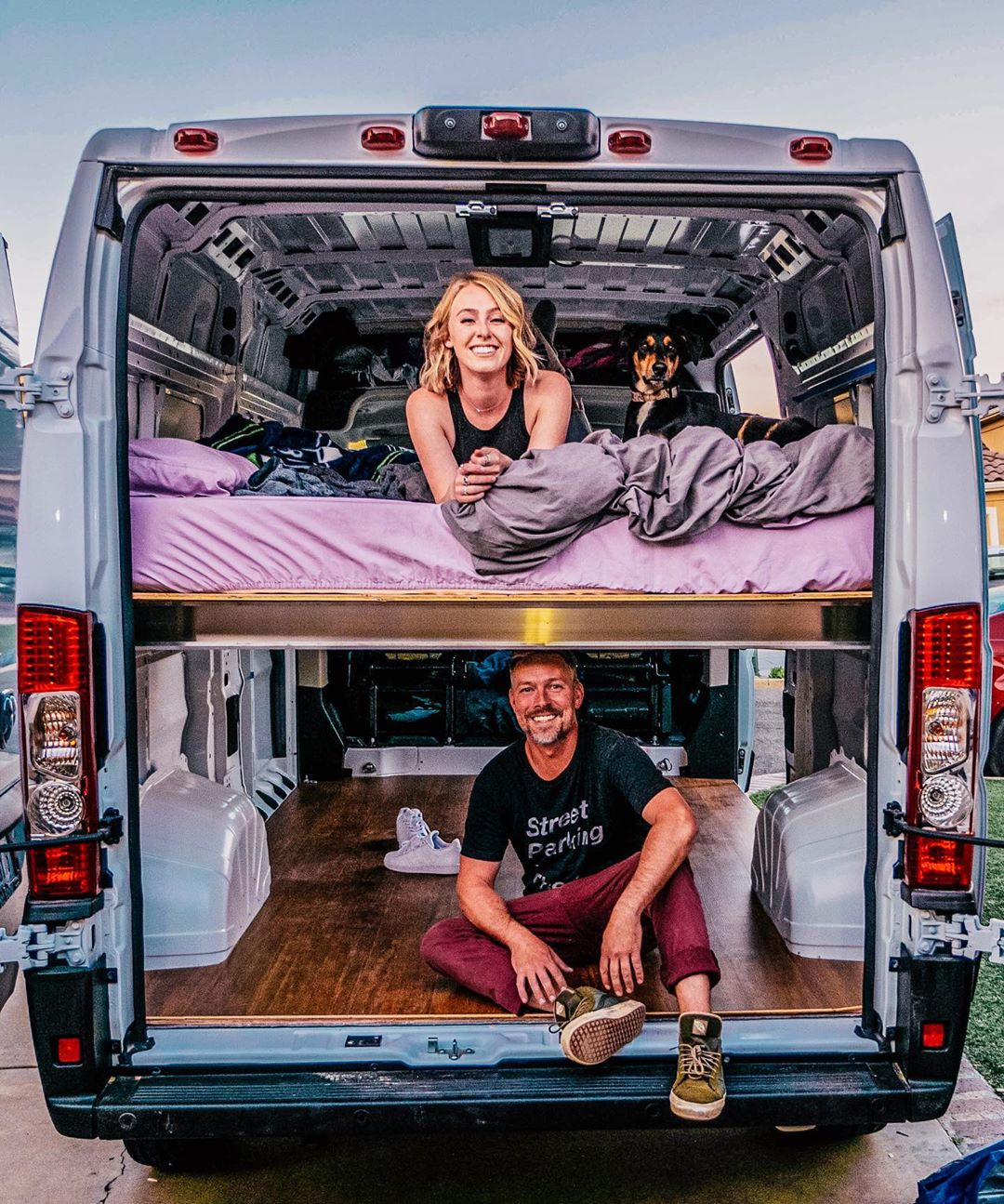
When he got his first van—he and his girlfriend Colette Hamilton are now on their second—he spent 14 hours a day for six weeks on its customization. His 2016 Mercedes Metris relieved him of $25,000, and it came with 14,500 miles on its road resume. Additional modifications and customizations exacted a further $7,000. The couple recently upgraded to a Ram ProMaster, which came with a mere 35 miles on its cruisin’ clock.
Once he got steady on his van-life legs, he found that people unacquainted with the lifestyle often asked the same questions, so much so that they became nearly cliché. “It’s a joke in the van community,” he observes. “‘Where do you poop? Where do you shower?’ We were at TinyFest a few weeks ago, and those are the questions that we got over and over. This is not a serious concern for us. We have our gym and Starbucks.” TinyFest is a thrice-a-year gathering that celebrates simple living and serves as a networking and informational opportunity.
For Benson, one of his biggest post-apartment realizations was the need to downsize. “About a week after I moved into the van, it struck me as I looked around that I had too many pairs of pants,” he recalls. “I got excited about shedding things that I didn’t need. The adjustment was when I learned how euphoric it can be to get rid of non-essential possessions. Also, when you first build a van, you don’t know where things belong. You find out when you need to use the space adjacent to it, and [the other things are] in the way.”
Van life comes saddled with a number of potential challenges. However, for Benson, his biggest emanated from an unexpected source: his parents. “I was terrified about coming out to them,” he admits. “They were trying to raise a CEO, and their kid has a law degree. Now he’s moving into his car. I didn’t tell them about my plan for a while. When my dad asked me what the toughest part about this was, I told him that it was the judgment. Communicating to your friends and family that you’ve made an unorthodox decision is the most difficult part. It’s the thing that I most love talking about with the guests on my Podcast.”
Benson created, hosts and produces “From the Van,” his van-life Podcast, which is available from many of the well-known hosts such as iTunes and Spotify and is also linked via Instagram @fromthevan. Like much of his life, it takes place almost entirely in his van. He points out that while the audience for it isn’t big yet, it does enjoy high retention.
Much like Sepp, Benson prefers to travel largely incognito, like a stealthy road-wise renegade. “We can pull into just about any parking space at ten o’clock, stay till seven and not raise any red flags or attract attention,” he notes with pride. “There’s like a four-hour tutorial to give on how and where to park. The short answer is that we can pull into a random town and stay for a night. It’s an acquired skill to learn where you can be without bothering people.”
For him and Colette, the van is their plan for the long haul. “I have no intention of moving into a brick-and-mortar home in the foreseeable future,” he maintains. “I also know plenty of people for whom this kind of life would be a severe disruption. There are many of them I respect who should not do this.” Upon reflection, his only regret is that he didn’t buy a larger van earlier.
To van-life hopefuls, Sepp shares the following guidance: “You can do it,” she asserts. “Work on getting a remote job before you go on the road. Also, try to buy your van for cash and pay your insurance as far out as you can. Set yourself up to the best of your ability and connect with your fellow travelers online. The wealth of support that pours forward is breathtaking. This lifestyle will [also] bring out creativity you never knew you had.”
Pennington echoes Sepp’s words of encouragement. “Do it!” she urges. “But don’t expect it to be all smooth sailing. It will teach you flexibility, grit, and endurance more than anything. It will also radically transform how you view your possessions. It’s a phenomenal learning experience that creates better humans.”
As he prepares to hop back into his van, Benson offers the following counsel: “Watch a bunch of YouTube videos and don’t believe the hype. Oftentimes, it’s not as sexy as the people on Instagram make it look. If you’re a malleable person, this is a passable way to live. The things that you stress about aren’t the real problems. The big challenges are the things you don’t yet know about.”
